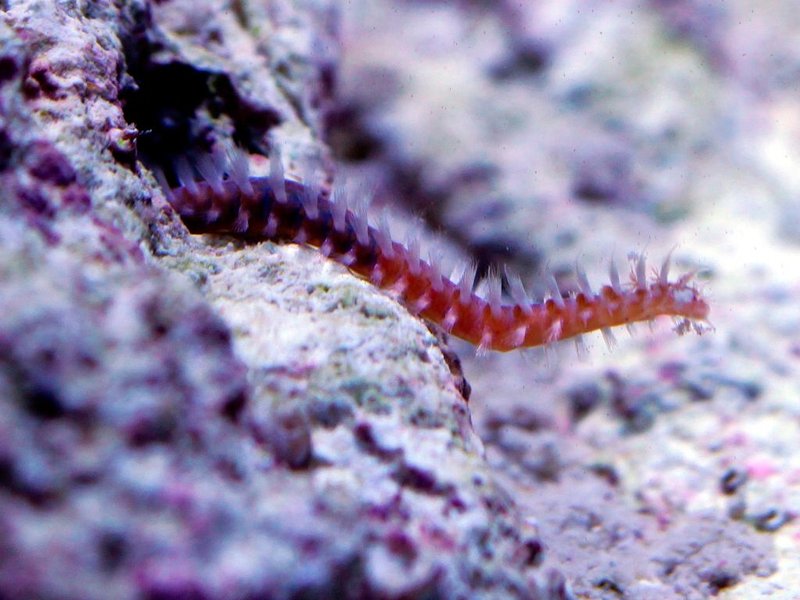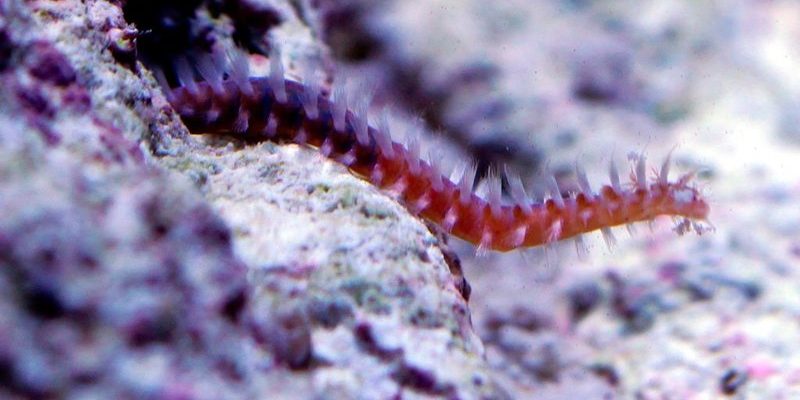
In this article, we’ll dive into the specifics of freshwater and brackish bristle worms. We’ll explore what makes these creatures tick, how they survive in different water types, and the science behind their adaptability. So, grab a cup of coffee, and let’s dig into this wormy wonderland together!
What Are Bristle Worms?
Bristle worms belong to the class Polychaeta, which is part of the annelid phylum. Think of them as the “rock stars” of the worm world—these guys come with a lot of styles and colors! With over 10,000 known species, bristle worms are diverse and intriguing. Most of them are found in marine environments, often hiding among rocks or burrowing into the sea floor.
One defining feature of these worms is their bristles, or “setae,” which help them move and grip surfaces. Imagine trying to climb a rocky hill without your hands—pretty tricky, right? That’s why these bristles are crucial for their survival, aiding them in locomotion and providing a means for protection against predators.
You might be wondering why these worms matter. Well, bristle worms play essential roles in their ecosystems. They help break down organic material and serve as food sources for various marine animals, contributing to the overall health of their environments.
Freshwater vs. Brackish Water: What’s the Difference?
Before diving deeper, let’s clarify what we mean by freshwater and brackish water. Freshwater is just that—water with minimal salt content, found in lakes, rivers, and ponds. Think of a crystal-clear lake overflowing with fish and frogs. On the other hand, brackish water is a mix of freshwater and saltwater, usually found in estuaries where rivers meet the ocean. Picture a muddy marsh where both salty ocean waves and fresh river currents collide.
Here’s why this distinction matters: bristle worms are traditionally associated with saltier environments, making the idea of freshwater or brackish bristle worms seem a bit unusual. Their biological systems are often adapted to the salt content in their typical habitats, making it challenging for them to thrive in lower-salinity waters. But there’s always room for exceptions in nature!
Can Bristle Worms Survive in Freshwater?
Honestly, the idea of bristle worms thriving in freshwater might sound a bit far-fetched. Most bristle worms prefer saltwater, and their bodies are not built for the low salinity of freshwater. However, some adaptable species may be able to survive in these conditions for short periods, especially if they find themselves in temporary freshwater environments.
For example, certain species like *Lumbrineris* can tolerate some changes in salinity. They might not be the ideal resident of a freshwater lake, but they can manage for a while if conditions permit. Now, imagine a worm that makes a dash from a salty sea to a cozy riverbank, holding its breath and hoping for the best—sounds like a real-life adventure, right?
Nevertheless, while some worms can survive brief excursions into freshwater, they usually don’t thrive there long-term. The lack of salt can disrupt their physiological processes, leading to issues with osmoregulation—the balance of salts and water in their bodies.
The Case for Brackish Bristle Worms
Now, let’s talk about brackish water—that middle ground where saltwater meets freshwater. Here’s the thing: brackish environments may offer more promising habitats for bristle worms than freshwater does. The mix of salinity can create a unique niche where some bristle worms can flourish.
Bristle worms like *Capitella* are often found in brackish waters. These adaptable creatures can handle varying salinity levels and significantly contribute to benthic ecosystems. They can burrow into the mud and help decompose organic matter, making the brackish environment rich for other marine life.
In essence, the transition to brackish waters opens new avenues for these worms. It’s as if they move from one party to another, finding themselves in a more favorable crowd where they can truly shine.
Why Do Bristle Worms Matter in Aquatic Ecosystems?
Bristle worms play several vital roles in aquatic ecosystems, regardless of their habitat. They’re not just pretty faces in the mud; they’re essential for maintaining healthy environments. Here’s why they matter:
- Nutrient Cycling: Bristle worms help break down organic material, recycling nutrients back into the ecosystem. This process supports plant and animal life in their environments.
- Food Source: Many fish and other marine animals rely on bristle worms as a food source. They’re a crucial link in the food chain.
- Soil Aeration: When they burrow into the substrate, bristle worms aerate the soil, promoting a healthier habitat for various aquatic organisms.
You might be surprised to know that these little critters can impact the health and sustainability of entire ecosystems. They’re like the unsung heroes of the underwater world, working quietly but effectively behind the scenes.
How to Identify Bristle Worms
Identifying bristle worms can actually be quite fascinating. These little creatures come in various colors, from vibrant red to soft olive green. They usually have a segmented body with bristles protruding from each segment, which gives them that distinctive appearance.
You might see them in marine tanks or during your beach explorations. Look for their long, segmented bodies wriggling around in the sand or mud. Their bristles can be a dead giveaway, even if they’re tucked away. Just be cautious—some species of bristle worms can irritate human skin, so it’s best to observe from a safe distance.
If you want to spot them in your local area, check tidal pools or estuaries. Or, if you’re curious about keeping some in a marine aquarium, they can become a lively addition to your underwater family.
So, can freshwater and brackish bristle worms exist? While true freshwater bristle worms are rare, the existence of adaptable species in brackish environments shows nature’s remarkable ability to surprise us. Their roles in ecosystems are indispensable, helping to maintain balance and support life.
Exploring the underwater world of bristle worms opens up a realm of wonder. Whether you’re a curious beginner or a seasoned ocean enthusiast, diving into this topic enriches your understanding of aquatic ecosystems. So, next time you spot a squiggly worm, take a moment to appreciate the incredible journey it has taken through the waters, adapting and thriving in its unique niche. Embrace the oddities of nature, and keep asking questions—the answers might just lead you on an exciting adventure of your own!

